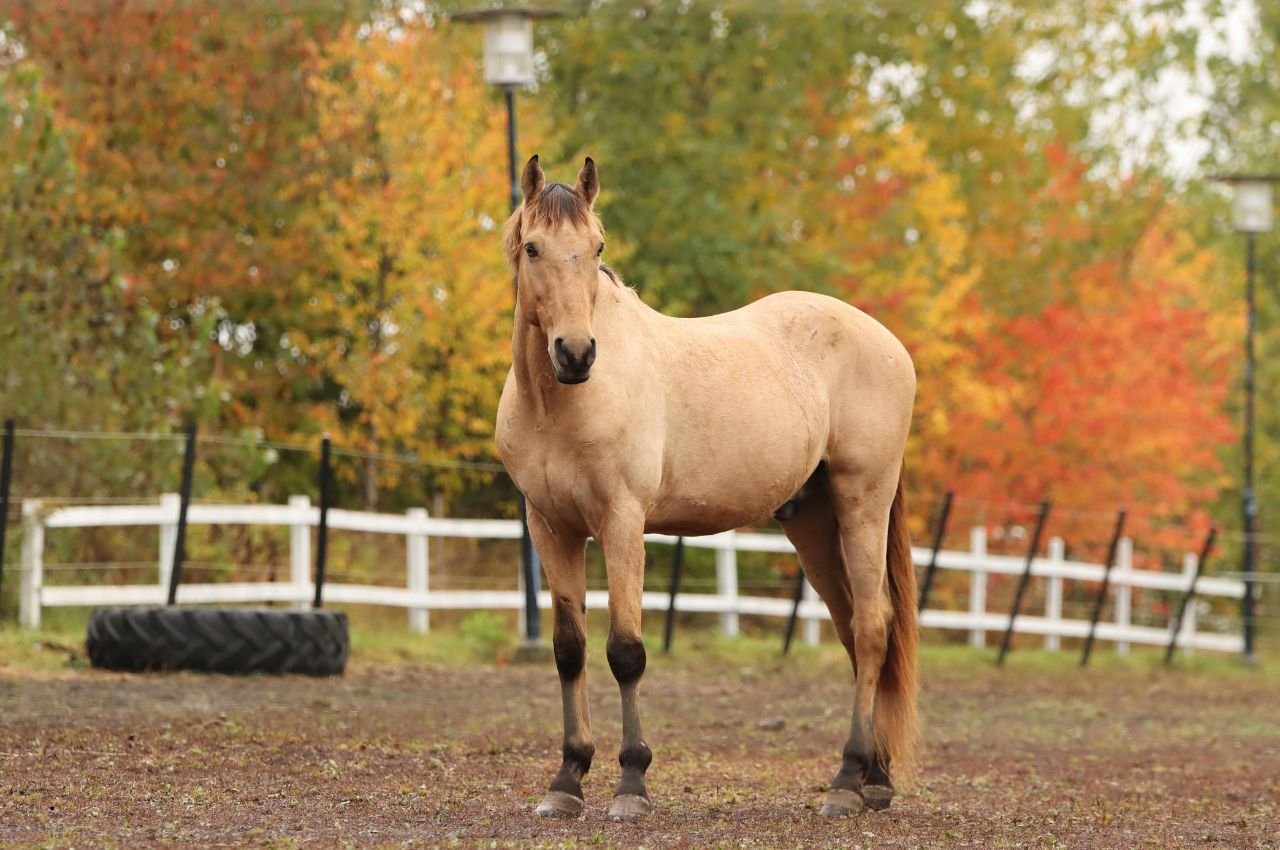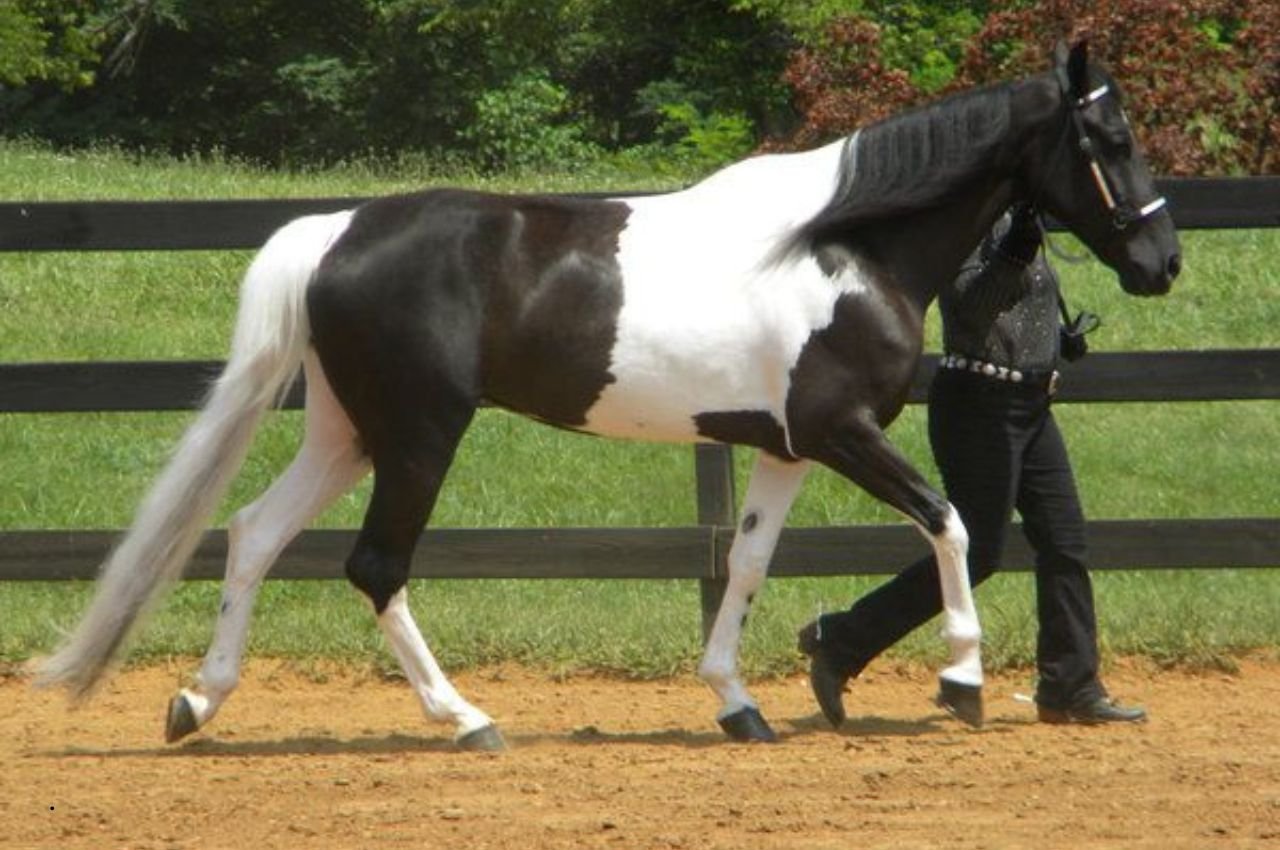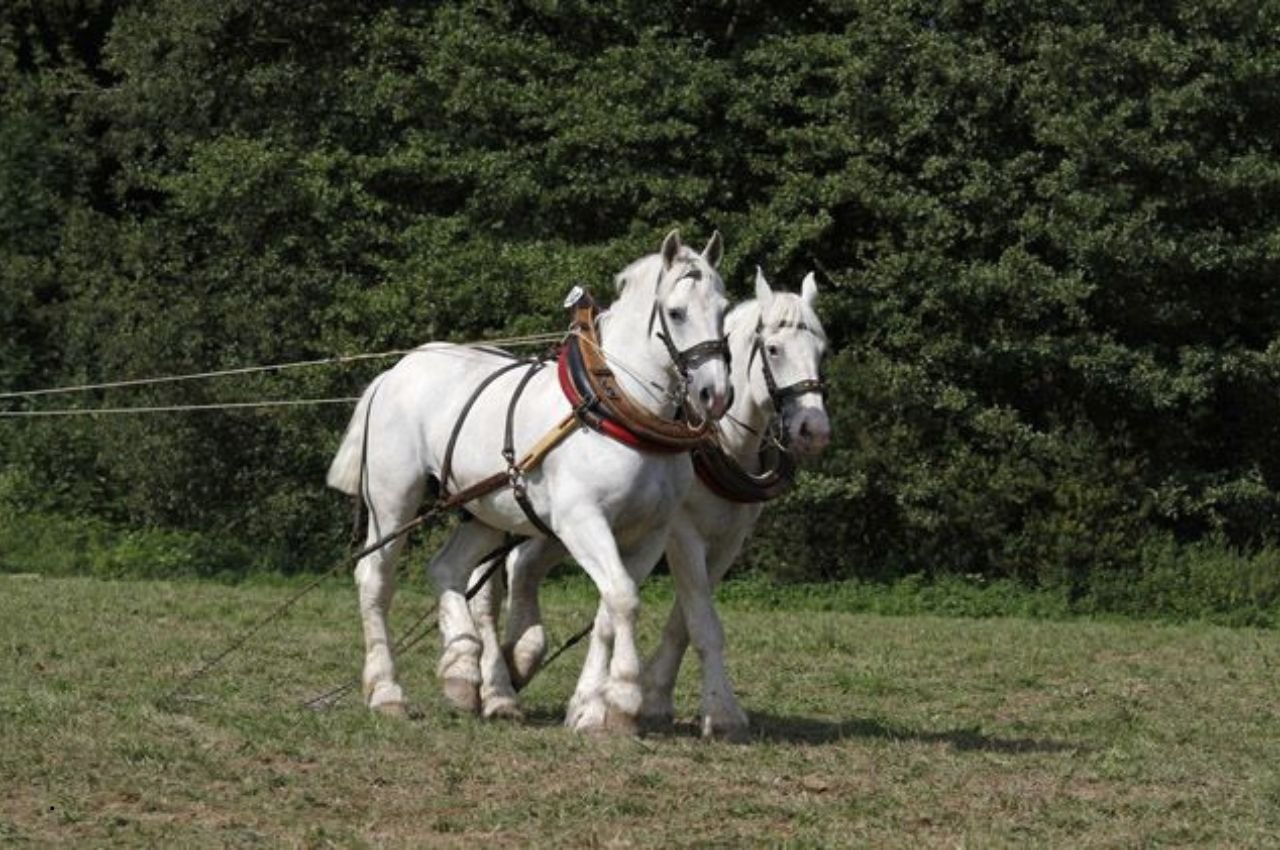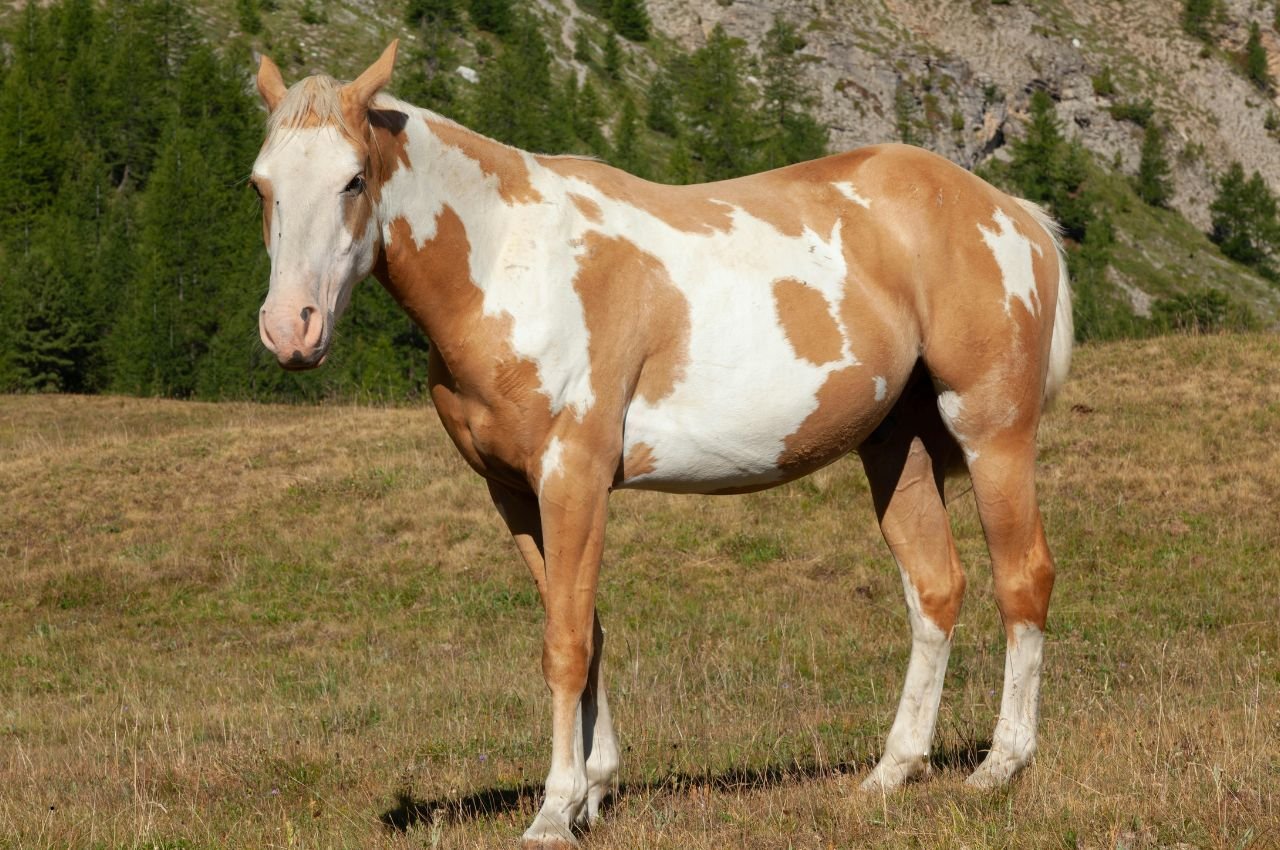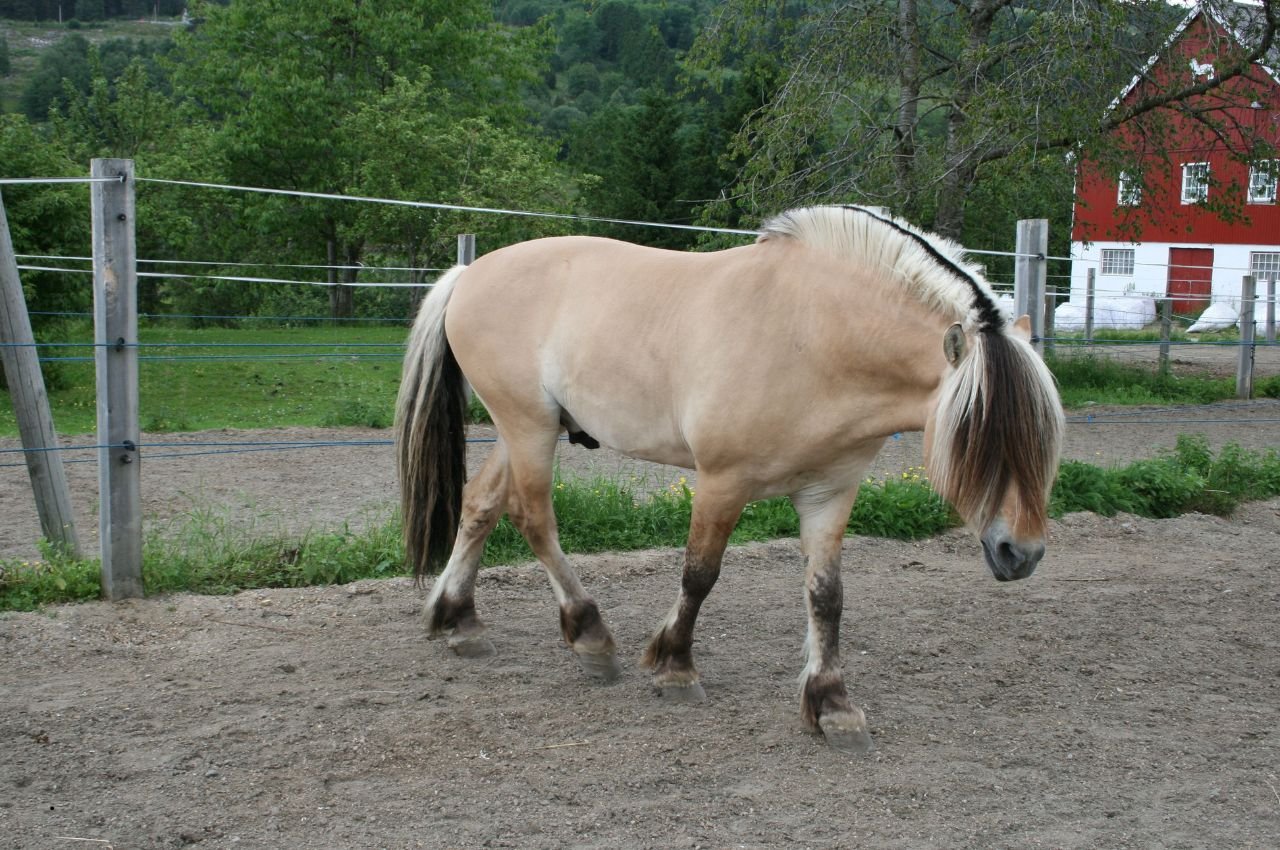Helping your horse lose weight safely and effectively is no small feat. It requires patience, strategy, and most importantly—knowing the right kind of diet. If you’re looking for a natural, fiber-rich solution that supports healthy weight loss, Timothy hay might be your best friend. Let’s dive into 7 weight loss tips that make Timothy hay the cornerstone of a leaner, healthier horse.
What’s Inside
Understanding the Role of Diet in Equine Weight Management
Why Equine Obesity Is a Growing Concern
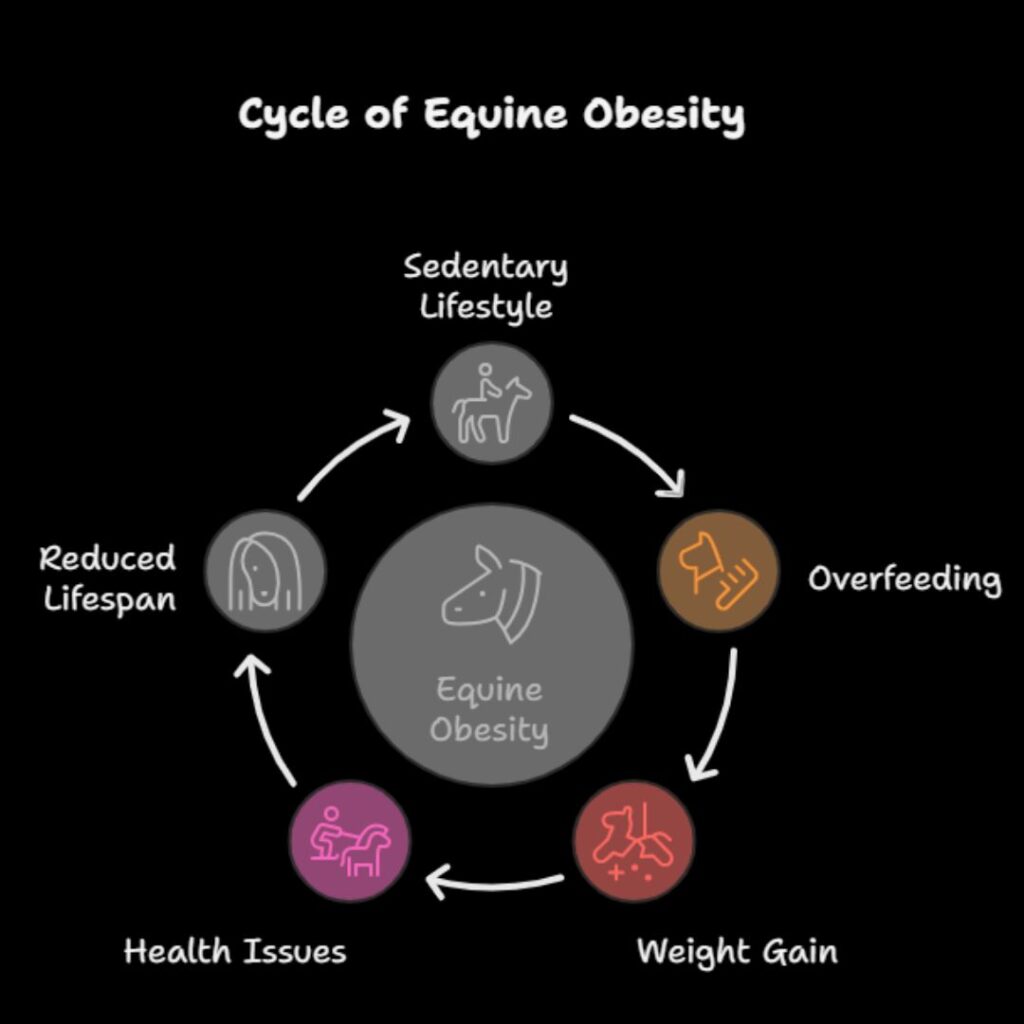
Just like humans, horses can suffer from obesity. And no, it’s not just about looks. Excess weight in horses puts a huge strain on their joints, increases the risk of laminitis, and can shorten their lifespan. With many domestic horses leading more sedentary lives and being overfed rich feeds, equine obesity is becoming more common than ever.
In fact, studies show that over 50% of adult horses in the U.S. are overweight or obese. That’s a staggering number, and it’s not just limited to pleasure horses—many show horses and even pasture ponies are tipping the scales. Most horse owners don’t even realize their horses are overweight until more serious health issues show up.
How Diet Affects a Horse’s Health
A horse’s digestive system is designed for slow, continuous grazing. Overfeeding grains, sweet feeds, or even rich hay can overload their system and contribute to weight gain. A proper diet supports not just body weight but also gut health, hoof strength, and immune function.
That’s where Timothy hay comes in. It’s a grass hay known for its balance of nutrition and low-calorie content, making it ideal for weight management. When used properly, Timothy hay becomes the foundation of a healthy feeding program designed to slim your horse down without sacrificing nutrition.
What Is Timothy Hay?
Types of Timothy Hay
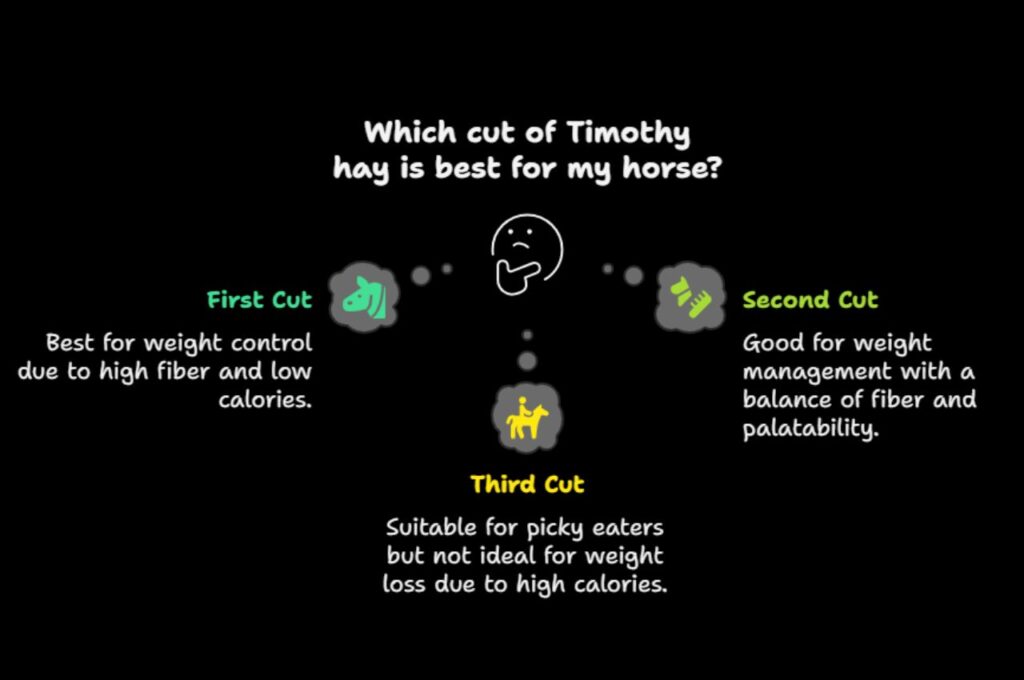
Timothy hay comes in three primary “cuts,” and each cut has slightly different nutritional properties:
- First Cut – Coarser and stalkier, this is the highest in fiber and the lowest in calories. Best for horses needing weight control.
- Second Cut – Softer, greener, and more palatable. Still good for weight management but slightly richer than the first cut.
- Third Cut – The softest and sweetest. Often used for picky eaters but usually not ideal for weight loss due to higher caloric content.
When choosing Timothy hay for weight loss, stick to the first cut. It keeps your horse chewing longer and feeling fuller without adding unnecessary calories.
Nutritional Profile and Benefits
Here’s why Timothy hay stands out:
- High in fiber – Supports digestion and gut motility.
- Low in protein and sugar – Ideal for metabolic or insulin-resistant horses.
- Naturally low in calories – Helps reduce overall caloric intake.
- Good chewing time – Keeps horses occupied and reduces boredom-related munching.
It’s also great for dental health and mimics natural grazing behaviors, which is especially beneficial for stalled horses.
Use Timothy Hay as the Forage Base
Low-Calorie, High-Fiber Diet

Timothy hay shines as a weight loss forage because it’s low in non-structural carbohydrates (NSCs), yet rich in digestible fiber. This means horses can consume more volume, feel full longer, and still lose weight. A horse’s digestive system is built to process high-fiber forages, and Timothy hay fits the bill perfectly.
Switching your horse to a Timothy hay-based diet can reduce their daily caloric intake without causing stress or nutritional deficiencies. Because the hay is lower in calories per pound than legume hays like alfalfa, you can feed similar amounts while still promoting weight loss.
How to Transition from Alfalfa or Other Forages
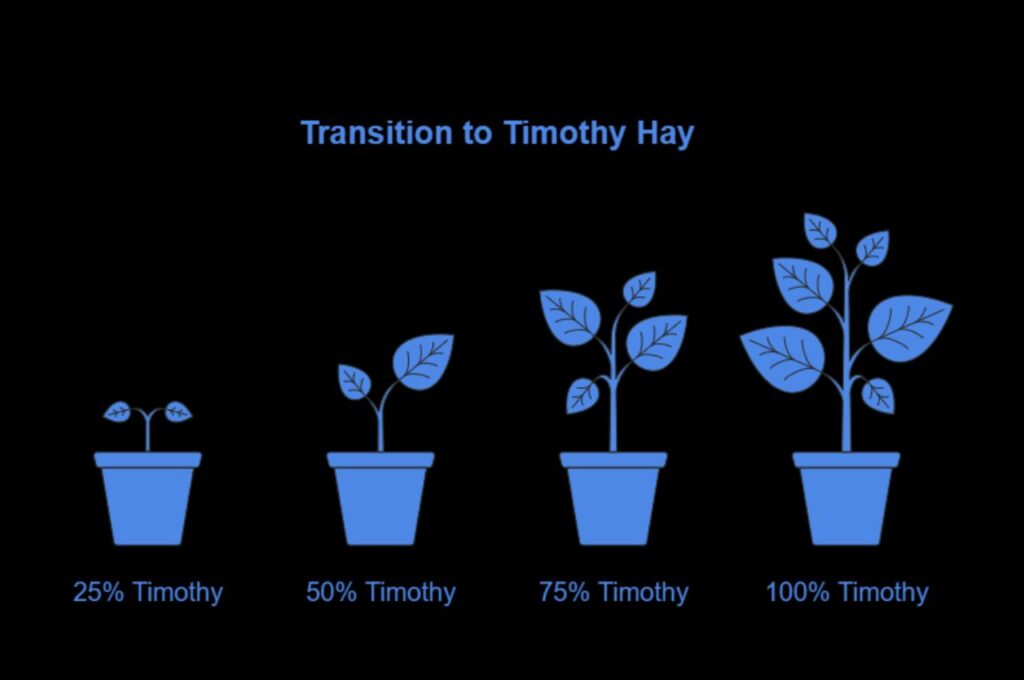
If your horse is currently eating alfalfa or a mixed hay with higher calorie content, don’t make an abrupt switch. Transition slowly over 7-10 days:
- Start with 25% Timothy, 75% current forage.
- Increase Timothy to 50% by day 4.
- Move to 75% Timothy by day 7.
- By day 10, your horse should be 100% on Timothy hay.
This gradual change allows the gut microbiome to adjust and prevents colic or digestive upset. Monitor your horse’s appetite, manure consistency, and energy levels during the switch.
Control Portions and Feeding Frequency
How Much Timothy Hay Should a Horse Eat Daily?
Even though Timothy hay is lower in calories, free-feeding can still cause weight gain in some horses. The golden rule for weight loss is to feed 1.5% to 2% of your horse’s ideal body weight in forage per day.
For example:
- A 1,200 lb horse that should weigh 1,000 lbs would eat 1.5% of 1,000 = 15 lbs of hay daily.
Weigh your hay portions with a scale. Guesswork often leads to overfeeding. Also, split this amount into multiple small meals throughout the day to mimic natural grazing behavior.
Ideal Feeding Schedule for Weight Loss
Instead of two large meals, break feeding times into three or four sessions:
- Morning (7 a.m.) – 5 lbs
- Midday (12 p.m.) – 3-4 lbs
- Evening (5 p.m.) – 5 lbs
- Late-night (9 p.m.) – 1-2 lbs
Spreading meals reduces hunger, prevents boredom, and keeps their metabolism engaged all day.
Monitor Body Condition Score (BCS)
What Is BCS and How to Measure It
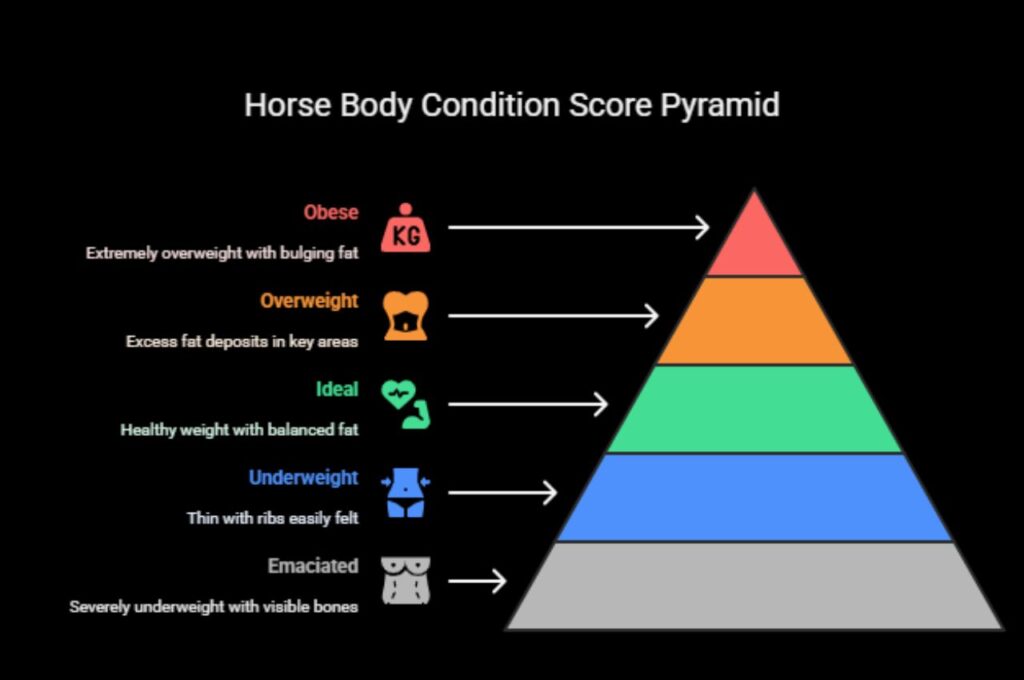
The Body Condition Score (BCS) is a standardized system used to evaluate a horse’s body fat and overall weight. It’s a visual and tactile tool that helps owners assess if their horse is underweight, overweight, or just right. The scale ranges from 1 (emaciated) to 9 (extremely obese). For most breeds, a healthy BCS lies between 4 and 5, depending on age, use, and metabolic needs.
Here’s how you can assess BCS:
- Neck: Check for fat deposits along the crest.
- Withers and shoulders: Feel for smoothness or bulging fat.
- Ribs: Run your hand along the rib cage. You should be able to feel ribs easily but not see them.
- Back and loin: Check if the spine is flush with surrounding flesh or sunken under fat.
- Tailhead and hips: Excess fat creates soft, spongy areas in these regions.
Regularly assessing your horse’s BCS (monthly or biweekly) will give you critical feedback on whether your weight loss strategy is working.
Adjusting Timothy Hay Intake Based on BCS
Once you’ve determined your horse’s current BCS, adjust Timothy hay intake accordingly. Here’s how:
- BCS 6–7 (Overweight): Feed closer to 1.5% of ideal body weight in hay.
- BCS 8–9 (Obese): Consider a strict 1.25–1.5% of ideal body weight, supervised by a vet.
- BCS 5 (Ideal): Maintain current feeding but keep watch.
- BCS 4 or less: Your horse may need additional feed or a different forage plan.
Never drop below 1% of your horse’s ideal body weight in forage unless under vet supervision—this can cause colic, ulcers, or even hyperlipemia. Timothy hay allows you to reduce calories safely while still providing bulk and fiber.
Pair Timothy Hay with Regular Exercise
Low-Impact Workouts for Overweight Horses
No weight loss program is complete without movement. Feeding Timothy hay helps reduce weight from the inside, but exercise melts fat from the outside. For overweight horses, however, you need to start slow.
Here are effective low-impact workouts:
- Hand walking – 20–30 minutes a day to build stamina.
- Lunging with breaks – Short intervals to avoid overheating or joint strain.
- Pasture turnout – Encourage natural movement and grazing behavior.
- Hill work or gentle trail rides – Builds muscle without high stress.
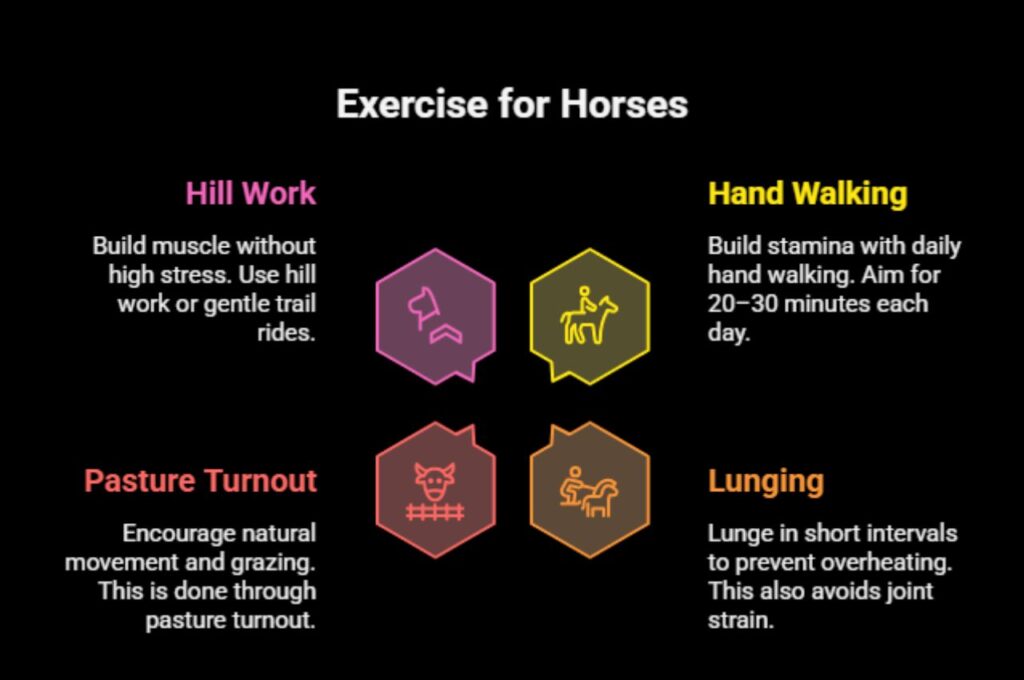
Even light movement helps burn calories, boost circulation, and improve overall attitude. Be sure to avoid intense exercise until your horse’s joints and cardiovascular system can handle the load.
Creating a Consistent Routine
Consistency is key. A sporadic schedule leads to inconsistent results. Aim for 5 days a week of activity, even if it’s light. Track progress with weekly photos or a fitness log.
Pair workouts with hay feeding. For example, feed a portion of Timothy hay after a workout to stimulate digestion and reward effort without high-calorie treats. Over time, your horse will start shedding fat, gaining lean muscle, and looking more athletic—without ever touching a treadmill.
Avoid Grain and High-Calorie Treats
Why Timothy Hay Is Better Than Grain-Based Feeds
Grains like corn, oats, and sweet feed are packed with calories and sugar—exactly what you don’t want when trying to slim down your horse. These feeds spike insulin, contribute to fat storage, and can lead to dangerous metabolic conditions such as laminitis or Equine Metabolic Syndrome (EMS).
Timothy hay, on the other hand, is naturally low in NSCs (non-structural carbohydrates), making it safe for insulin-sensitive horses and ideal for weight loss. It helps stabilize blood sugar, promote satiety, and mimic the horse’s natural diet more closely than processed grain mixes.
When transitioning off grain:
- Reduce the amount gradually over 7–10 days.
- Replace lost calories with increased Timothy hay or a ration balancer.
- Monitor energy levels and body condition to avoid weight loss that’s too rapid.
Safe, Low-Calorie Treat Alternatives
We all love spoiling our horses, but treats can sneak in extra calories fast. Instead of sugary snacks, try these healthier options:
- Chopped carrots – Low in sugar and easy to portion.
- Celery sticks – Crunchy, hydrating, and calorie-light.
- Handful of Timothy hay cubes – Familiar and safe.
- Sugar-free horse treats – Designed specifically for metabolic horses.
Just remember: treats should make up no more than 10% of your horse’s daily calorie intake. Even healthy snacks can add up if given too often.
Use a Slow Feeder or Hay Net
Preventing Overeating with Feeding Tools
Horses are natural grazers, meant to eat little and often throughout the day. When you dump a pile of hay in the stall or paddock, your horse may eat too fast and run out before the next meal. This leads to boredom, stomach acid build-up, and overconsumption.
Enter slow feeders and hay nets—game changers for weight control.
Slow feeders:
- Limit intake speed, extending feeding time by up to 3x.
- Mimic natural grazing behavior.
- Prevent hay wastage and reduce stall boredom.
Choose feeders with small mesh openings (1–1.5 inches) for best results. For particularly clever horses, double-layered nets or corner-mounted feeders work well.
Best Types of Slow Feeders for Timothy Hay
When it comes to Timothy hay, especially the stalkier first cut, durability and design matter. Here are some top choices:
- Nibble Nets – Portable and long-lasting.
- Hay Pillows – Great for ground feeding.
- Savvy Feeder Boxes – Heavy-duty and perfect for pasture use.
- DIY Hay Nets – Affordable and customizable.
Always monitor the first few feedings to ensure your horse adjusts to the new system without frustration. It might take a day or two, but most horses quickly figure it out.
Consult with an Equine Nutritionist
Importance of Personalized Feeding Plans
Every horse is different. While Timothy hay offers a solid foundation for weight loss, a certified equine nutritionist can tailor the plan to your horse’s unique needs—age, breed, workload, health conditions, and more.
A nutritionist can:
- Calculate exact caloric requirements.
- Recommend supplements or balancers if your horse needs extra nutrients.
- Help you avoid deficiencies while reducing calories.
- Adjust feeding plans as your horse’s condition changes.
This professional input ensures you’re not just guessing but building a science-backed strategy for success.
When to Seek Professional Help
If your horse isn’t losing weight despite following the right steps—or if they’re losing weight too fast—bring in a pro. Also consult a nutritionist if your horse has:
- History of laminitis
- Cushings (PPID)
- Insulin resistance
- Unexplained lethargy or mood changes
A little expert help can mean the difference between frustration and fantastic results.
Common Mistakes in Equine Weight Loss Programs
Cutting Calories Too Fast
One of the biggest errors horse owners make is slashing calories too quickly. While it might seem logical to feed less for faster weight loss, doing so can be dangerous. Horses have delicate digestive systems that rely on a steady intake of forage to function properly. Rapid calorie reduction can lead to:
- Colic
- Gastric ulcers
- Muscle loss instead of fat loss
- Metabolic disturbances such as hyperlipemia
Instead of shock dieting your horse, aim for a gradual reduction. This means feeding 1.5–2% of the horse’s ideal body weight in Timothy hay and reducing it only if there’s no progress after a few weeks.
Ignoring Nutritional Balance
Another common mistake is assuming that hay alone provides everything a horse needs. While Timothy hay is an excellent forage, it may lack some essential nutrients like:
- Vitamins A, D, and E
- Trace minerals (selenium, copper, zinc)
- Essential amino acids
If your horse is on a restricted diet, consider a ration balancer or vitamin-mineral supplement to meet these needs without adding excessive calories. Always balance weight loss with overall health—you’re not just feeding less, you’re feeding smarter.
Signs Your Horse Is Losing Weight Safely
Visual and Physical Indicators
Successful weight loss in horses doesn’t happen overnight, but there are some reliable signs that your program is working. Keep an eye out for:
- Ribs becoming more palpable (but not protruding)
- Smoother topline as fat along the back reduces
- Less jiggling in the neck, belly, and hindquarters
- Visible reduction in fat pads over the tailhead and withers
Photograph your horse from the side and top every two weeks for a visual reference. Changes happen slowly, and photos can help you see the bigger picture.
Behavior and Performance Improvements
As your horse sheds excess weight, you may notice they:
- Move more freely
- Are less lethargic
- Show better stamina during rides
- Have improved attitude and focus
Weight loss isn’t just about numbers—it’s about helping your horse feel and perform better. If your horse is brighter, more active, and easier to handle, you’re definitely on the right track.
Long-Term Benefits of Using Timothy Hay
Sustained Weight Control
Timothy hay isn’t just a temporary fix—it’s a long-term solution. By providing consistent, balanced nutrition with fewer calories, it sets your horse up for a healthy future. Unlike restrictive diets or gimmicky feed programs, Timothy hay can remain a cornerstone of your horse’s daily intake for years.
Horses that maintain a healthy weight tend to:
- Have fewer vet visits
- Experience fewer lameness issues
- Live longer and more comfortable lives
With Timothy hay, you’re promoting sustainable weight management rather than a crash diet.
Reduced Risk of Metabolic Issues
Horses with metabolic disorders like Equine Metabolic Syndrome (EMS) or Cushing’s Disease (PPID) benefit immensely from low-sugar, high-fiber diets. Timothy hay is one of the safest forages for these conditions because:
- It’s naturally low in NSCs
- It stabilizes insulin levels
- It keeps the gut moving and the mind calm
Even if your horse doesn’t currently have metabolic issues, feeding Timothy hay can be a powerful preventative measure, reducing the risk of disease down the line.
Conclusion
Helping your horse lose weight isn’t about quick fixes or starvation diets—it’s about smart, sustainable choices. Timothy hay is one of the best tools you have to promote healthy weight loss while keeping your horse happy, active, and well-nourished.
By using Timothy hay as the foundation of your feeding plan, portioning meals properly, incorporating exercise, avoiding high-calorie treats, and consulting with professionals when needed, you’ll create a routine that transforms your horse from overweight to optimal health.
Stay patient, track progress, and remember: your horse’s wellness journey starts with the hay in their stall.
FAQs
How long does it take for a horse to lose weight on Timothy Hay?
On average, expect to see noticeable results in 6–12 weeks, depending on the horse’s starting weight, activity level, and overall health. Gradual progress is safer and more sustainable.
Can Timothy Hay alone meet a horse’s nutritional needs?
While Timothy hay is an excellent forage, it may not provide all essential vitamins and minerals. Use a ration balancer or supplement to fill in the gaps.
What are the risks of overfeeding even low-calorie hay?
Even low-calorie hay can contribute to weight gain if overfed. Stick to feeding 1.5–2% of ideal body weight and use slow feeders to manage intake.
Should I soak Timothy Hay before feeding it?
Soaking can reduce sugar content further, which is helpful for metabolic horses. Soak for 30–60 minutes and drain well before feeding.
How do I switch my horse to Timothy Hay safely?
Transition gradually over 7–10 days:
Start with 25% Timothy hay.
Increase to 50% by day 4.
Move to 75% by day 7.
Full transition by day 10.
This prevents digestive upset and encourages acceptance.


